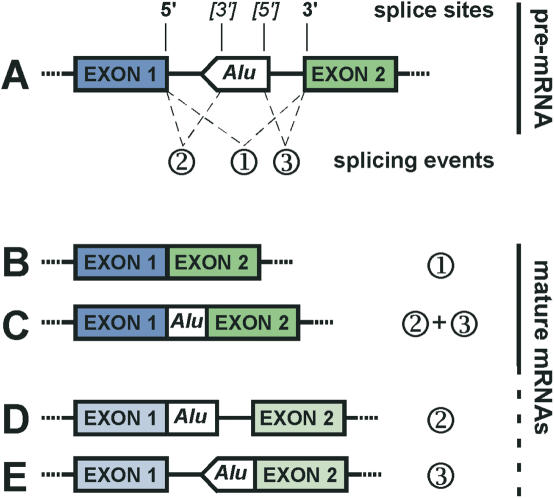Figure 2.
Exonization of intronic Alu elements. Hypothetical Alu element inserted in an orientation that opposes the sense of transcription in an intronic region. This element has a major 3′ splice site near position 275 and a major 5′ splice site near position 158 as described in the text. The use of alternative splice sites of the Alu element can lead to a variety of mature mRNAs. (A) Pre-mRNA with possible splicing events (1; 2; 3). 5′ and 3′splice sites are indicated. Alternative splice sites of the Alu element are under brackets. (B) Regular splicing without Alu exonization resulting from splicing event 1. (C) Exonization of the intronic Alu element by use of its 5′ and 3′ splice sites together with the 5′ splice site of exon 1 and 3′ splice site of exon 2; result of the splicing event 2 and 3. Only the Alu element is exonized. (D) Exonization of the intronic Alu element by use of its 3′ splice site together with the 5′ splice site of exon 1; result of the splicing event 2. The Alu element and the 3′ end of the intron are exonized. (E) Exonization of the intronic Alu element by use of its 5′ splice site together with the 3′ splice site of exon 2; result of the splicing event 3. The Alu element and the 5′ end of the intron are exonized. Notably, (D and E) represent theoretical possibilities, which have so far never been observed in vivo. Because of exon length restriction (68), they are unlikely to occur. However, they might have existed as rare splice variants of evolutionary intermediates of (A).

